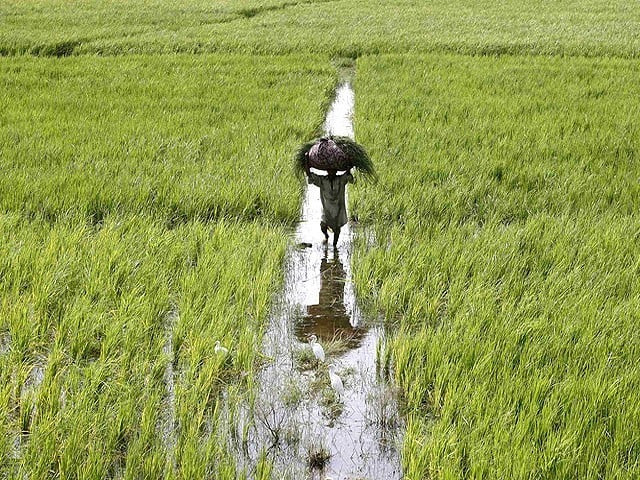Food security expected to improve
Country reports turnaround in output of almost all crops compared to last fiscal year

Pakistan is expected to report improvement in food security during the ongoing fiscal year after the country reported turnaround in output of almost all crops compared to last fiscal year when low output led to significant surge in inflation and the government resorted to import food items to overcome the shortage in supplies.
The estimated growth of the agriculture sector in the outgoing fiscal year 2020-21 is projected at 2.8% with the production of three important crops - wheat, rice, and maize - rising to record highs and sugarcane crop reporting the second-highest yield ever, according to government estimates revised in last week of May.
Besides these four crops, the production of minor crops such as potato, onion, gram, and tomatoes is also anticipated to grow significantly. The growth is backed by timely rains and sufficient availability of irrigation water.
More importantly, businesses have made massive borrowings to establish cold storage facilities to prolong the lifespan of perishable foods in the country, according to the central bank’s report on the state of Pakistan’ economy in the second quarter (Oct-Nov) of the current fiscal year 2021.
Wheat production of the country is projected to hit a historic high level of 27 million tons this year compared to 25.25 million tons last year, showing a growth of almost 7%, said the report. It has already achieved the second-highest production of sugarcane which grew 22% during Kharif season 2021 compared to the previous year.
The output of rice and maize surged 13.6% and 7.4%, respectively, a research house added.
Most of the Kharif crops, except for cotton, surpassed last year’s production levels due to an increase in the area under cultivation. On the flipside, the estimated cotton production was revised downward to 7.7 million bales, which can be traced to its lowest area under cultivation since FY82 as well as a decline in yields.
For the Rabi crops in general and wheat in particular, the government introduced a comprehensive package comprising of subsidies for fertiliser, fungicides and weedicides. In addition to the package, the Economic Coordination Committee (ECC) raised the minimum support price (MSP) of wheat from Rs1,400 per 40 kg bag last year to Rs1,650 for the current season, the central bank said.
“Preliminary data captures an increase in the area under wheat cultivation in Punjab - which typically accounts for nearly three-fourth of wheat production in the country - and suggests that the policy initiatives are likely to support the crop sector growth further,” the State Bank of Pakistan (SBP) said.
The agriculture credit disbursements also picked up during Q2-FY21 from last year, mainly reflecting the increase in farm sector loans availed for development purposes, such as the development of cold storage facilities. Businesses borrowed $2.9 billion for setting up cold storages during first half (Jul-Dec) of FY21 compared to Rs1.3 billion in the same half of the previous year, according to SBP.
The total disbursement of agriculture credit was marginally higher during first half of FY21 at Rs617 billion compared to Rs614.4 billion in the same period last year. Irrigation water supply during Q2-FY21 was marginally higher compared to the same period last year, as well as the Q2 average for past five years. Meanwhile, in rain-fed wheat-producing regions, rain spells occurred at timely intervals during Q2-FY21, which bode well for the prospects of wheat output.
Published in The Express Tribune, June 6th, 2021.
Like Business on Facebook, follow @TribuneBiz on Twitter to stay informed and join in the conversation.



















COMMENTS
Comments are moderated and generally will be posted if they are on-topic and not abusive.
For more information, please see our Comments FAQ